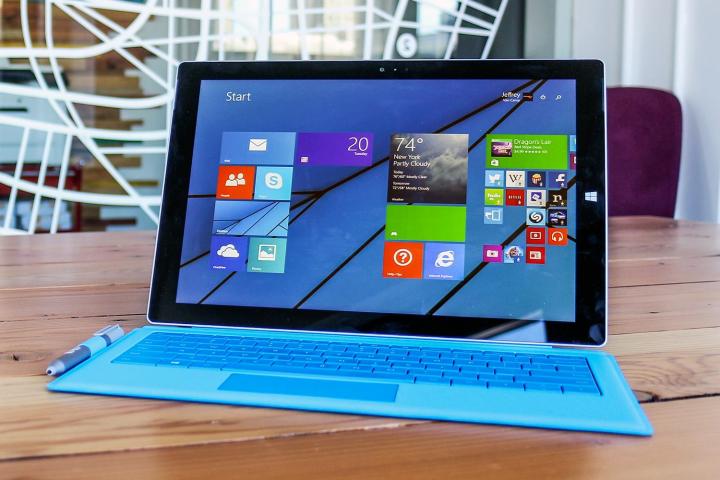
Today, Microsoft announced the Surface Pro 3. It’s a high-powered laptop/tablet hybrid that looks to unseat Apple’s MacBook Air as the best all around mobile computer. Once it’s available for pre-order starting tomorrow, the Surface Pro 3 will be offered at five price points, ranging from $799 to $1,949. The cream of the crop includes an Intel Core i7 processor, 8GB of RAM, and 512 GB of storage. However, all that power comes at the aforementioned (and steep) price of $1,949.
Let’s take a look at how the high-end 11-inch Macbook Air stacks up against the top of the line Surface Pro 3 by comparing their specs.
Power and productivity
Both are outfitted with 4th-generation Intel Core i7 processors. However, it’s unclear whether the Surface Pro 3 packs a current or previous-generation Core i7. Meanwhile, the Air is powered by a 4th generation Intel processor.
When it comes to display resolution, Microsoft wins big. The Surface Pro 3’s resolution betters the MacBook Air’s by miles, though we wonder how that will impact the Pro’s battery life.
Design
The biggest difference between the SP3 and MacBook Air lies in the design. But first the similarities, they have similar screen sizes and rated battery life. Obviously, one is a laptop and the other is a tablet. The SP3 promises to out-shine the Macbook air in size and weight, making it significantly more portable than Apple’s offering.
The SP3’s tablet body weighs 1.76 lbs, which is significantly lighter than the Air’s 2.96 frame, all while providing a larger 12-inch touch screen. However, it’s worth noting that the Surface Pro 3 ships without a keyboard. To snag one, you’ll have to put down an extra $129.99, which will also add to the device’s bulk.
Camera
The Surface Pro 3 packs a 1080p webcam on both the front and back, while the 11-inch MacBook Air is limited to a 720p webcam that’s mounted to the front of the display.
Price
Without factoring in the extra cost of a $129.99 Surface Pro Type Cover keyboard, this version of the 11-inch MacBook Air costs $1,649. Meanwhile, the high-end Surface Pro 3 will run you $1,949. That’s a difference of $300, which heavily favors the Air.
Conclusion
Microsoft designed the Surface Pro 3 with weight and thinness in mind, and it shows. Though the 11-inch MacBook air is a bit bulkier and features an inferior display resolution, when it comes to core specs like CPU, RAM and storage, it matches the Surface Pro 3. When you factor in the $300 you’d save by going with the Air, it’s difficult to make a strong case for the Surface Pro 3.
Based on this comparison, which device would you choose and why? Let us know in the comments below.
Editors' Recommendations
- Best MacBook deals: Get an Air for $605 and save on M3 MacBook Pro
- Best Apple deals: Save on AirPods, Apple Watch, iPad, MacBook
- Best Buy’s deal of the day is $150 off the MacBook Air M2
- The 5 best MacBooks for video editing in 2024
- MacBook Pro 16 vs. MacBook Pro 14: The important differences




